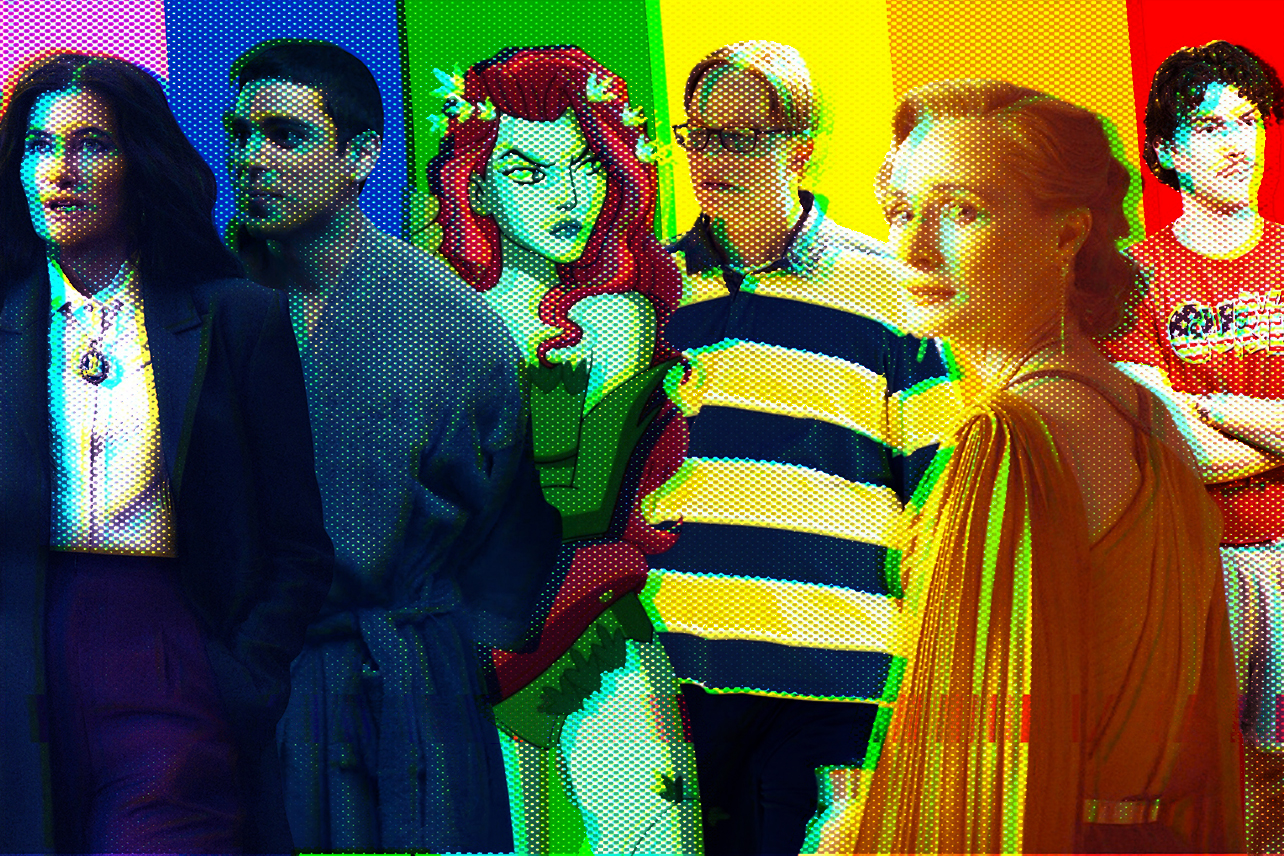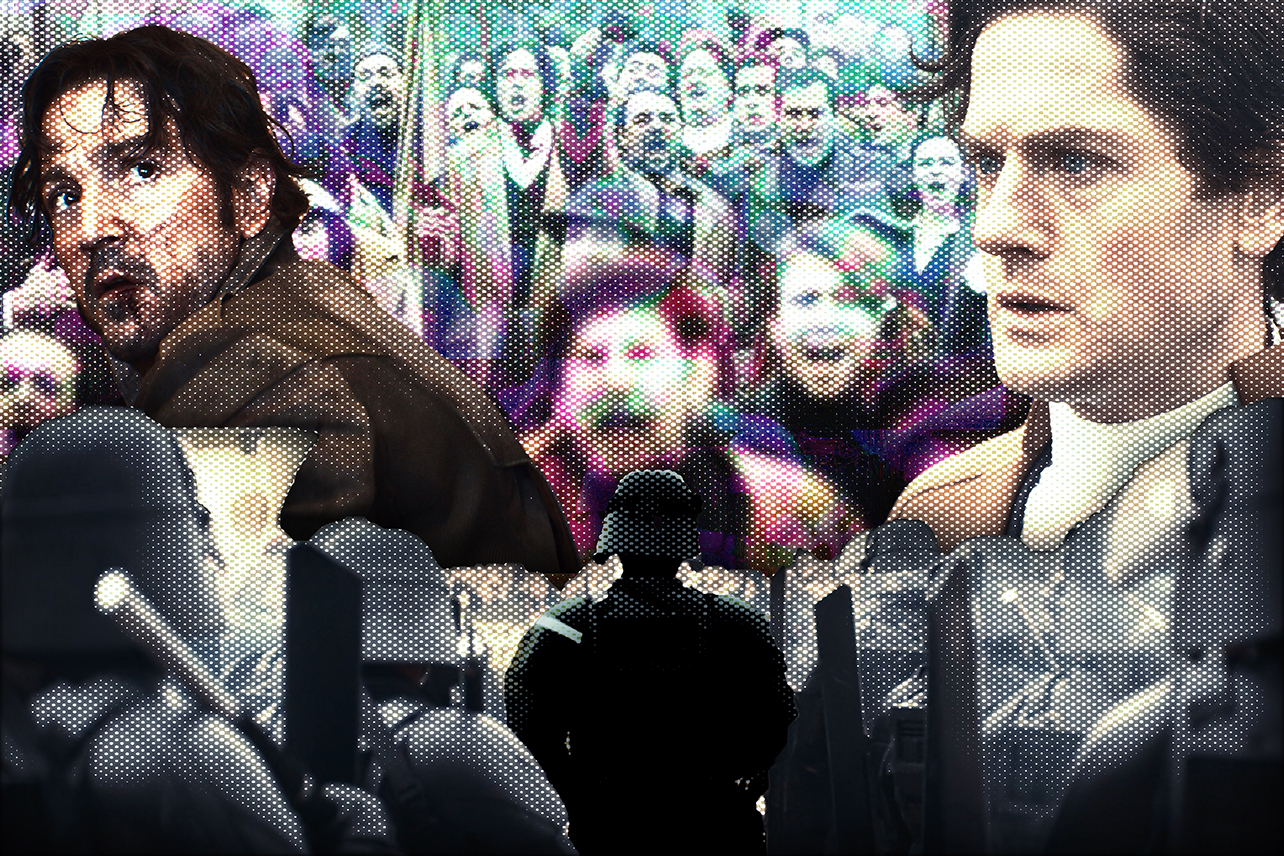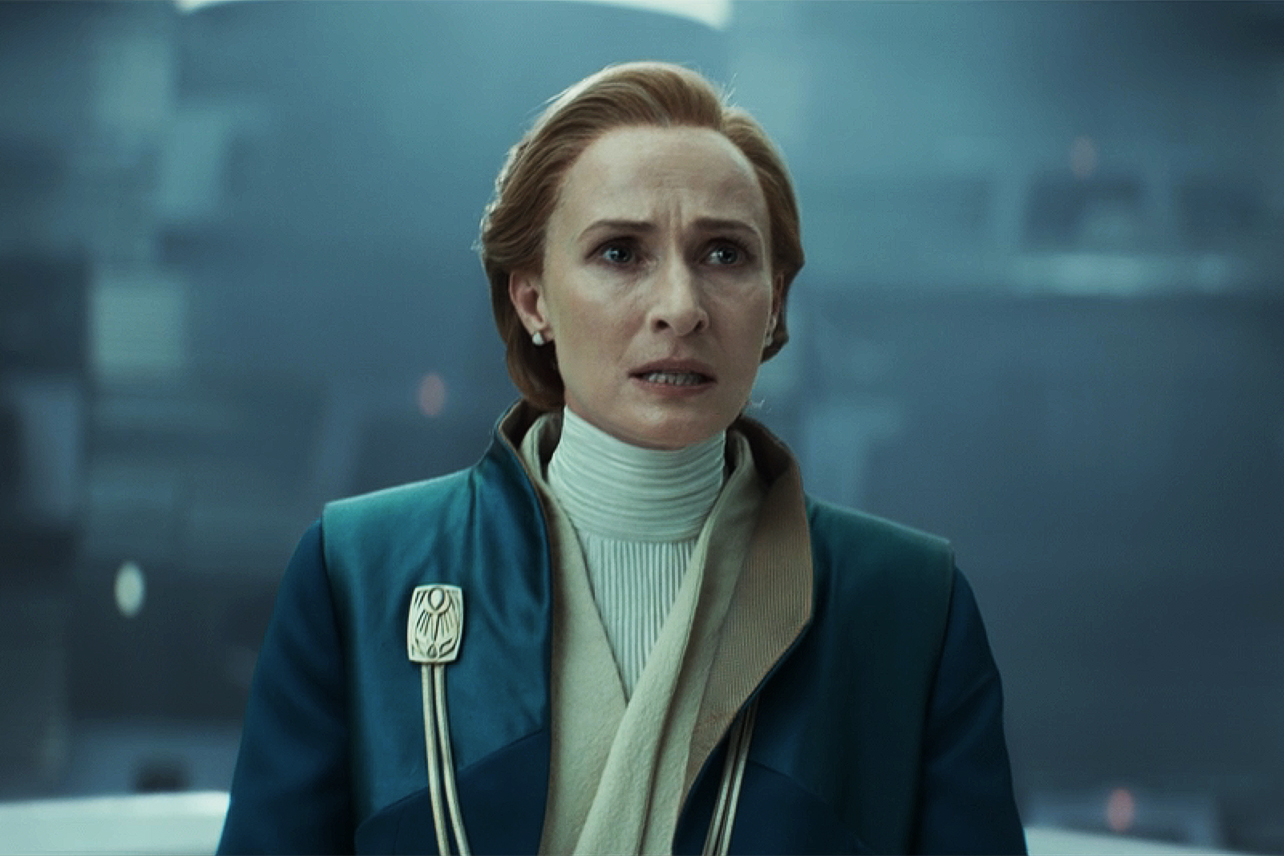Here I am, getting teary-eyed over a damn promotional featurette. That is what Andor has done to me. Thirteen minutes of Andor Season 2 behind-the-scenes footage and narrative analysis and I'm just floored. That's the power of Andor, a Disney+ original series about how violent revolution is necessary in the face of absolute tyranny. Welcome to 2025, hope you survive the experience.
If you haven't watched this exquisite "commercial," please do — after you watch this week's episodes, of course. There are spoilers everywhere.
I want to talk about the tactile success of Andor, because that's what this featurette so intimately conveys. Years ago, I thought that The Volume — the seamless, 360° monitor soundstage within which any background can be projected — was revolutionary. It was revolutionary, and it felt like a brilliant compromise between the in-camera craftsmanship of the original trilogy and the green screen Oz of the prequels. I thought that The Mandalorian looked the most like a 21st century Star Wars of anything we'd seen up until that point.
But The Volume was used to increasingly diminished returns. A dullness crept into the productions, a boxed-in feeling. Suddenly being able to go anywhere made every new planet feel more like nowhere. It also didn't help that seasons like The Mandalorian Season 3 or The Book of Boba Fett were just ... bad. Would those storylines have been helped by expansive (and expensive, yeah) practical production design? I mean ... maybe?
And this is why Andor makes me so emotional. As shown in that mini-doc, a sizable chunk of Andor is real. It's as real as it feels onscreen. The featurette focuses primarily on the Ghorman set, which includes a huge, circular town square and a number of businesses spoking outwards — a café, a hotel, an office building, a fashion house. It's Madison Square Park, or whatever the French and/or Italian equivalent is of that. And it's all real.
Showrunner Tony Gilroy points out what should be obvious but is so easily taken for granted in Star Wars: if you write that a character is using a knife, or drinking from a cup, or sitting in a chair, you can't just use a normal knife, cup, or chair. It has to be a Star Wars chair — specifically a Ghorman chair, which has to look different from a chair on Naboo or Tatooine.
Granted, Andor's level of craftsmanship — headed up by production designer Luke Hull — was still used on Volume shows like Mandalorian; The Volume can't replicate things that an actor is holding. But in Andor, this philosophy extends outwards to nature and architecture and atmosphere. It can't just be a tree.
The "World Building" video also gets into the costuming, specifically the Karl-Lagerfeld-but-actually-suave-and-charismatic look that Cassian Andor adopts to embed himself in the Ghorman square. But Michael Wilkinson's costuming skills aren't just evident in flashy capes and silk ensembles. On Andor, you can't just read "Dedra Meero, in blouse and trousers" in a script and then pop over to Macy's and see what they have. Or Brooks Brothers. Dedra seems more like a Brooks Brothers woman. I'm saying, these people have to rethink what everything looks like.
The amount of work, the granular detail, it's really hard to wrap one's mind around, but this doc is a good place to start. And I haven't even gotten into the way Andor created cast exclusively French actors as Ghormans and created its own language, to capture the vibe of the French Resistance. Or how Bix and Vel's character arcs deepen in opposing directions. Or f'ing Stellan Skarsgård dropping a damn hammer of a soundbite like "the reason for revolution is empathy." Like it was nothing! THIS SHOW.
Anyway — Andor Season 2 is rolling out on Disney+, and may it continue to dazzle and inspire us long after it's over. This is the bar now.






